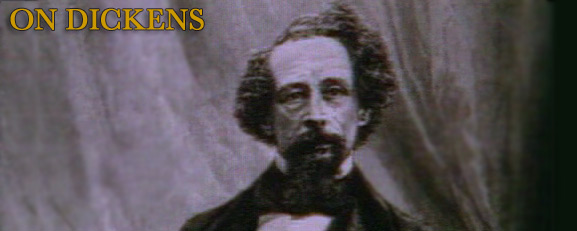On Dickens

Charles Dickens was born in Hampshire on 7 February, 1812,
the second of eight children. His father, John, was a clerk
in the navy pay office. In 1814 the family moved to London
and then to Chatham, Kent.
In 1824, John Dickens got into financial problems and was
sent to a debtors’ prison, leaving his son to earn
the money to pay his way out; Charles, then 12, went to
work in a blacking factory, an experience that was to make
a deep impression on him. He also had a formal education,
going to school from 1824-1827, when he left to become a
law office clerk. Dickens soon turned to writing, however,
writing factual articles for several newspapers and
magazines throughout the 1830s. He also edited periodical
publications, such as Bentley’s Miscellany and the
London Daily News.
Dickens’ career in fiction started in 1833 when some
of his short stories were accepted by periodicals. In 1836
he published his first books, Sketches By Boz and The
Pickwick Papers, which proved to be popular. Most of
Dickens’ books, including Oliver Twist, were
published in monthly instalments, leaving readers to wait a
month to find out what happened next. You can see how
Dickens used cliff-hangers to maintain people’s
interest by looking at the endings of chapters.
Published in 1839-39, Oliver Twist was one of Dickens’ earlier novels, along with Nicholas Nickleby (1837-1839) and The Old Curiosity Shop (1840-1841). Among his later works are David Copperfield, Bleak House (1852-53), A Tale Of Two Cities (1859) and Great Expectations (1860-1861). As well as writing, Dickens spend a lot of time touring the country and abroad, publicising his books and giving lectures. He also founded and edited a magazine called Household Words (later called All The Year Round). Dickens married Catherine Hogarth, the daughter of a friend in 1836 and together they had 10 children, although they separated in 1858. In 1860 he moved to a house near Rochester, Kent, where he died in 1870.
